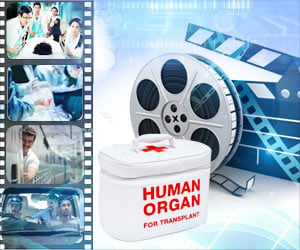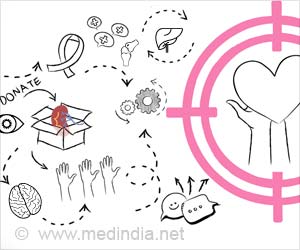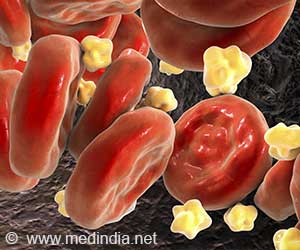Kerala government defines the next step after a brain death declaration is made. The GO lays out guidelines for brain stem death declaration to ensure standard clinical procedures are followed during the declaration.
Highlights:
- In India, the concept of brain death has been closely linked with organ donation
- In the case where a family says no to donation – doctors refuse to switch off the ventilators and support system
- Kerala Government has passed an order that allows doctors to switch off ventilators in such cases
TOP INSIGHT
GO passed by the Kerala government defines the next step after a brain death declaration is made. The GO lays out guidelines for brain stem death declaration to ensure standard clinical procedures are followed during the declaration.
Read More..
Organ Donation in Indian Scenario
In India, for the last 25 years, the concept of brain death has been closely linked with organ donation, as it is defined only in the Transplantation of Human Organs Act (THOA), 1994 (1✔ ✔Trusted SourceMinistry of Law, Justice and Company Affairs, Govt of India. The Transplantation of Human Organs Act, 1994
Go to source) which governs organ transplantation and has enabled the development of the current deceased donation program. However, the availability of this definition only in the THOA has led to a lack of clarity among medical professionals with regard to the appropriate steps to be taken when a person is declared brain dead and the family has not consented to organ donation. (2✔ ✔Trusted Source
Brain Death Revisited
Go to source) It is believed that in such instances, clinicians are hesitant to declare brain death. (3✔ ✔Trusted Source
To help the living, India's hospitals need a uniform definition of death
Go to source) Furthermore, it is also presumed that owing to the public’s mistrust in the healthcare system, the relatives fear that the patient has been declared brain dead for the purpose of organ donation. It, therefore, becomes essential to de-link brain death from organ donation and frame a uniform policy in the country, which requires the inclusion of “brain death” in the definition of death in The Registration of Births and Deaths Act, 1969.
In Indian law, brain death is defined for the purposes of organ donation and transplantation through the Transplantation of Human Organs Act in 1994, followed by an amendment in 2011. (4✔ ✔Trusted Source
Ministry of Health and Family Welfare, Govt of India. The Transplantation of Human Organs and Tissues Rules, 2014
Go to source)
Brain Death Certification
When the family of a person declared brain dead consents to donate any of the deceased’s organs, the steps laid out in the THOA for brain death declaration are followed. Four doctors are required for certification of brain death, and this certification is to be done twice, six hours apart, as per the THOA. (5✔ ✔Trusted SourceEvolution of deceased-donor transplantation in India with decline of commercial transplantation: a lesson for developing countries
Go to source) However, there are no clear guidelines on the standard of care when the family declines to donate.
Doctors treating such patients are often unsure of what needs to be done and hence do not turn off the ventilator. This practice of ventilating a deceased goes against ethical medical practice and also blocks a valuable ICU bed that may be required by needy and such shortages are more acute in government hospitals.
Apnoea test, the gold standard in brain death certification, is done to substantiate the initial diagnosis of brain death characterized by signs such as lack of pupillary response, corneal reflex, or cough reflex.
A patient is declared brain dead by a panel of four doctors when the absence of spontaneous breathing is established by performing the apnoea twice. The practice prevalent in some units involves clinicians performing the second apnoea only if the family agrees to organ donation, as it is presumed that brain death certification is only for the purpose of organ donation. This is also because, in many instances where after the second apnoea is done and the patient is declared brain dead, the family can decline to donate and request the doctors to continue the ventilator support till circulatory death occurs.
The doctors find themselves bound to comply with such requests of the grieving families and also the absence of guidelines with respect to disconnecting the ventilator prevents them from making an informed decision. Furthermore, many doctors are of the opinion that consent from the family is required to withdraw support and take a defensive stand, fearing controversies, yielding to the requests of families. (6✔ ✔Trusted Source
Discontinuation of ventilation after brain stem death
Go to source)
Guidelines for Brain Stem Death Declaration
In this context, the GO passed by the Kerala government, which clearly defines the next step after a brain death declaration is made, is a welcome move. The GO lays out guidelines for brain stem death declaration to ensure standard clinical procedures are followed during the declaration.- Establishing clinical brain death diagnosis prior to subjecting a person to further confirmatory tests
- Clinicians should inform the prognosis to the family of the patient who would be subjected to brain stem death tests, including apnoea
- Assessing brain stem reflexes using a series of tests, with an interval of six hours, by a panel of four doctors (one impannelled by the Appropriate Authority)
- Apnoea test to be the last of tests and to be performed only if other tests confirm the absence of brain stem reflexes
- Apnoea to be performed twice, with a minimum of 6-hour interval, for certainty and to avoid errors
- Neurophysiological or imaging study to be performed when in doubt about the brain stem death diagnosis to establish the absence of blood flow and electrical activity
- If brain stem death criteria is met after two sets of examinations, the committee must declare patient dead, note date and time
- Time of death is to be when arterial pCO2 reaches target value during the second apnoea
- Family should be given brain stem death confirmation report signed by all four doctors
- Cardiorespiratory support and all treatment should be discontinued once brain steam death is declared
Conclusion
The GO paves the way for inclusion of brain death as a form of death in both The Registration of Births and Deaths Act and in the death certificate. It makes it possible to arrive at a uniform definition of death, which would include both the circulatory and neurological criteria of death. The GO achieves this primarily by steering clear of organ donation, thereby giving no leeway for ambiguities.References:
- Ministry of Law, Justice and Company Affairs, Govt of India. The Transplantation of Human Organs Act, 1994 - (https://mohfw.gov.in/sites/default/files/Act%201994.pdf)
- Brain Death Revisited - (https://www.ncbi.nlm.nih.gov/pubmed/29547144)
- To help the living, India's hospitals need a uniform definition of death - (https://scroll.in/pulse/826963/to-help-the-living-indias-hospitals-need-a-uniform-definition-of-death)
- Ministry of Health and Family Welfare, Govt of India. The Transplantation of Human Organs and Tissues Rules, 2014 - (http://www.mohanfoundation.org/THO-Rules-2014.pdf)
- Evolution of deceased-donor transplantation in India with decline of commercial transplantation: a lesson for developing countries - (https://www.kisupplements.org/article/S2157-1716(15)31117-5/pdf)
- Discontinuation of ventilation after brain stem death - (https://www.ncbi.nlm.nih.gov/pmc/articles/PMC1116089/)
Source-Medindia
 MEDINDIA
MEDINDIA




 Email
Email










